7 Best Commodity Stocks to Play the Coming Boom
These seven commodity stocks are poised to take advantage of a unique confluence of events. Just mind the volatility.
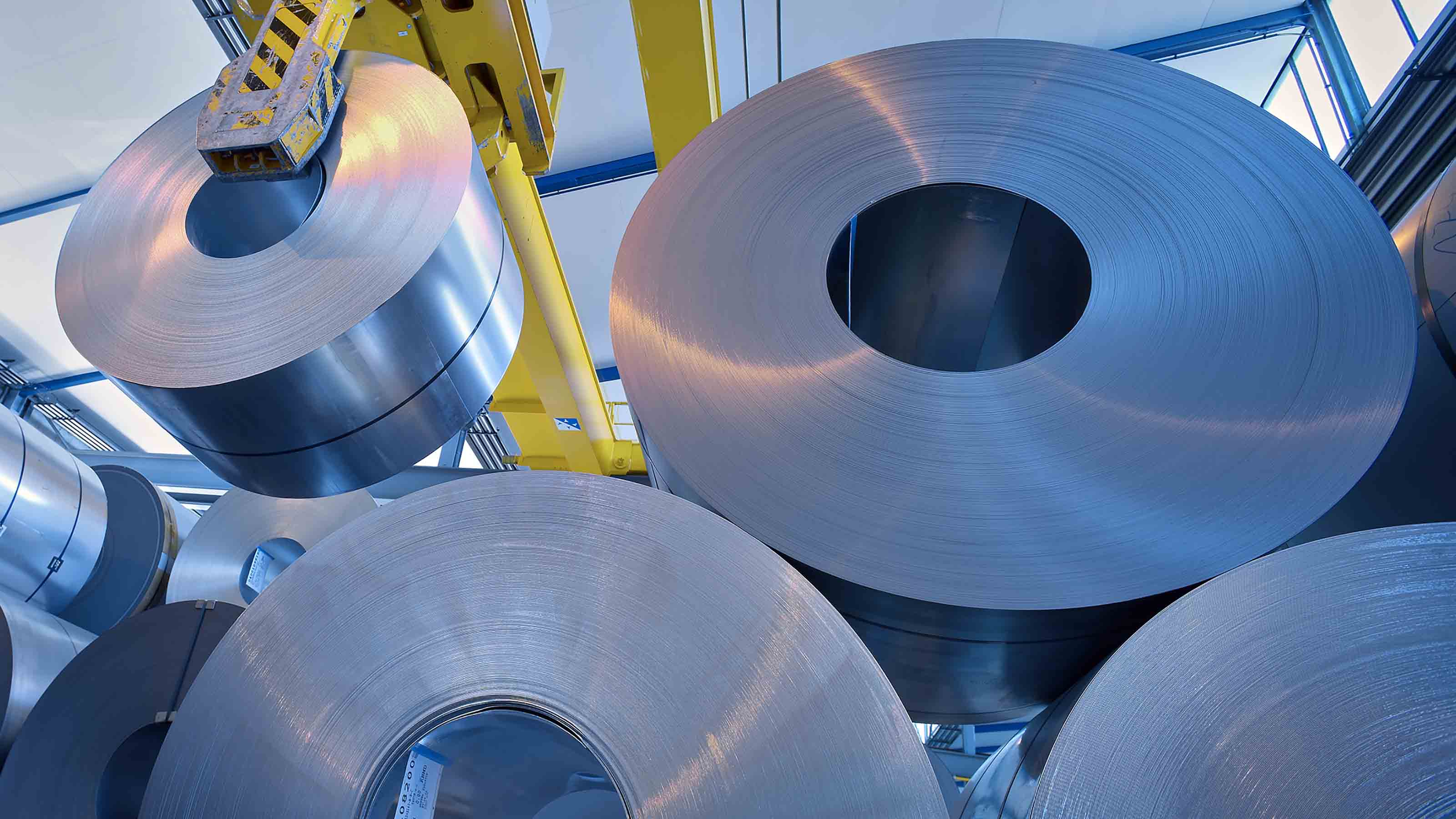

It's difficult to remember a time when tech stocks weren't the market-leading sector. For well over a decade now, the major indexes have been dominated by high-growth technology names, and this only accelerated during the pandemic, as home-bound Americans depended more heavily on technology to keep working and stay busy.
But it hasn't always been that way, and investors today would be wise to diversify outside of this comfort zone. We might be in the early stages of a commodities bull market, one that could see commodity stocks – typically from the materials sector – outperform growth stocks and potentially for several years.
"Since 2008, the market has had a strong preference for growth names in general and technology names in particular," says John Musgrave, co-chief investment officer of Cushing Asset Management. "But commodity and energy names dominated in the 2000-08 period – a time when many tech stocks lagged."
We might be entering a period similar to that 2000-08 stretch. Then, as now, tech stocks had enjoyed a long period of outperformance, and commodity stocks had suffered through a period of underperformance. And then, as now, we were coming out of a period of extraordinary and unprecedented stimulus from the Federal Reserve.
But there's another angle, too.
With America's trillion-dollar infrastructure plan nearing reality, we could soon see a sustained demand for raw materials from the government. Moreover, infrastructure spending is popular virtually everywhere, and with the global economy still trying to get past the lingering effects of the COVID pandemic, we can bet that other countries will follow suit.
And, of course, there is the elephant in the room: inflation. Between pandemic-related supply disruptions and higher-than-usual demand, both consumer and producer price inflation has been bubbling higher. Commodities are a natural inflation hedge, so any sustained rise in prices should only add fuel to this fire.
Today, we're going to take a look at seven commodity stocks poised to take advantage of this unique confluence of events. Buyer beware: These stocks have historically been volatile … but that volatility comes with the possibility of market-beating returns.
Disclaimer
Data is as of Sept. 7.
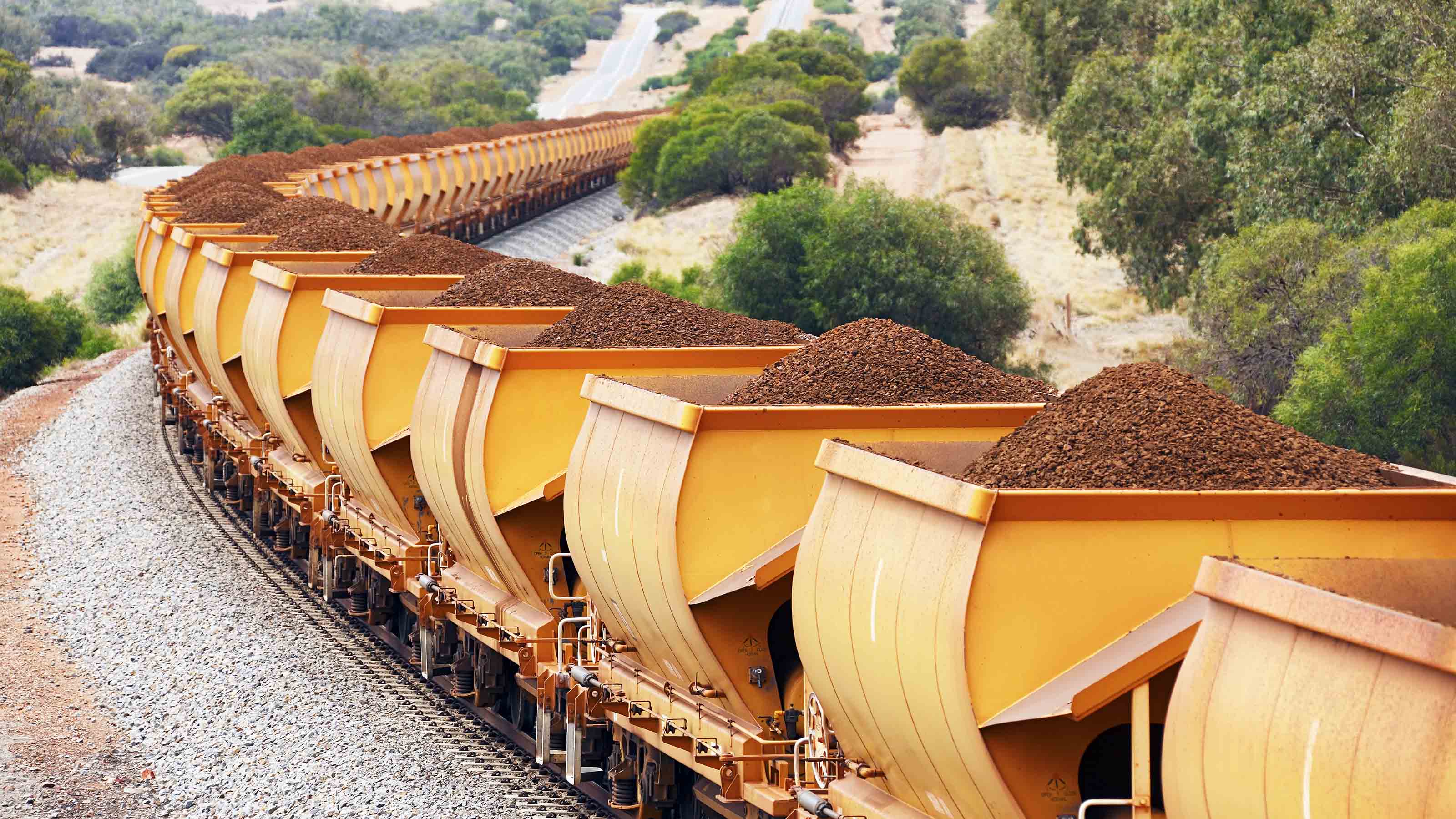
Vale
- Market value: $93.7 billion
- Dividend yield: 4.7%
We'll start with Brazilian mining juggernaut Vale (VALE, $18.71). Based in Rio de Janeiro, Vale is one of the world's leading miners of iron ore. It regularly dukes it out with fellow commodity stocks BHP Group (BHP) and Rio Tinto (RIO) to be the largest iron ore miner in the world. Vale also is the world's largest nickel miner and is a major producer of copper, gold, silver and other metals, as well as metallurgical and thermal coal.
If it's gritty and used in heavy industry, chances are good that Vale pulls it out of the ground.
Vale is not a stock for the faint of heart. When it moves, it really moves. And that can cut both ways. From its lows in 2002 to its highs in 2008, an investor holding the stock could have made well over 20 times their money. But from that peak to its trough in 2016, VALE shares lost about 95% of their value.
The stock has been largely pushing higher since 2016 and really took off out of the March 2020 lows. But even after more than tripling over the past five years, VALE still would have to double and then some to touch its old highs.
That's OK. If commodities continue to boom, Vale's shares should get much closer to its record levels than where they are today.
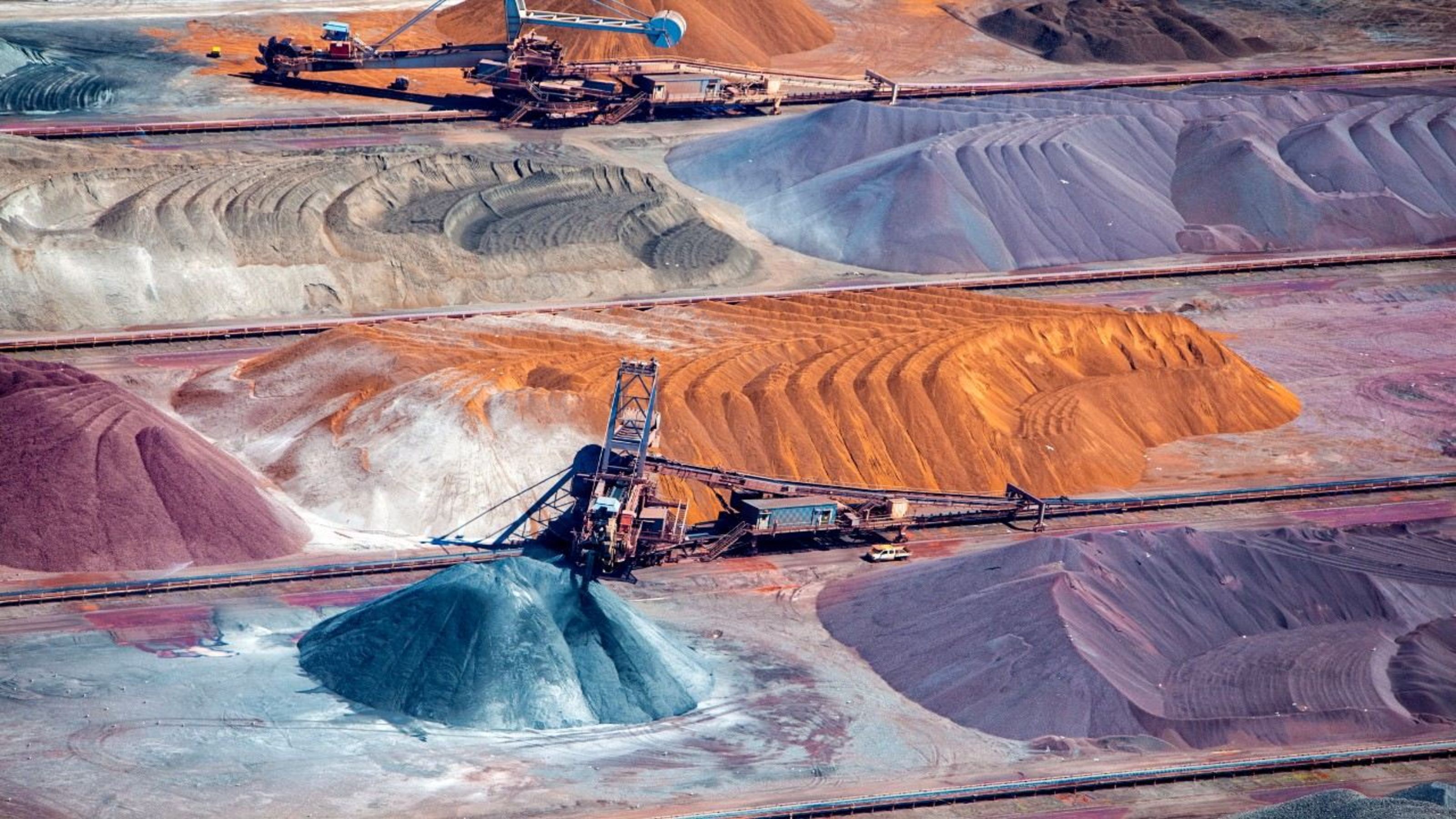
Rio Tinto
- Market value: $120.7 billion
- Dividend yield: 6.6%
Along the same lines, fellow miner Rio Tinto (RIO, $74.56) is almost impossible not to own if your goal is to build a diversified portfolio of commodity stocks. The company is one of the largest miners in the world and has a history stretching back to 1873. The company is headquartered in London but has operations spread across the globe.
Rio Tinto is anything if not diversified. It's a leading producer of iron ore, aluminum, copper, diamonds, titanium and even salt.
Mining stocks might not seem all that sexy in an age of electric vehicle stocks or cryptocurrencies, which of late have frequently doubled or better in a single year. But Rio Tinto is no slouch. From its lows in the late 1990s to its highs in 2008, for instance, shares rose by a factor of more than 13.
Currently, Argus Research likes RIO amid measures to improve its core operations. "Rio Tinto has strengthened its operating performance and balance sheet by cutting costs and selling noncore assets," says analyst David Coleman (Buy). "The company has traditionally performed well during difficult economic times, and, in our view, has strong long-term growth opportunities."
RIO is unlikely to explode for those kinds of gains again, but it could still deliver sizable outperformance if commodity strength continues.
Coleman also notes that Rio Tinto can deliver returns through its hefty dividend, which currently yields well more than 6%. (Just note that, as is the case with many European companies, the stock pays its dividend semiannually like a bond as opposed to quarterly like an American dividend stock.)
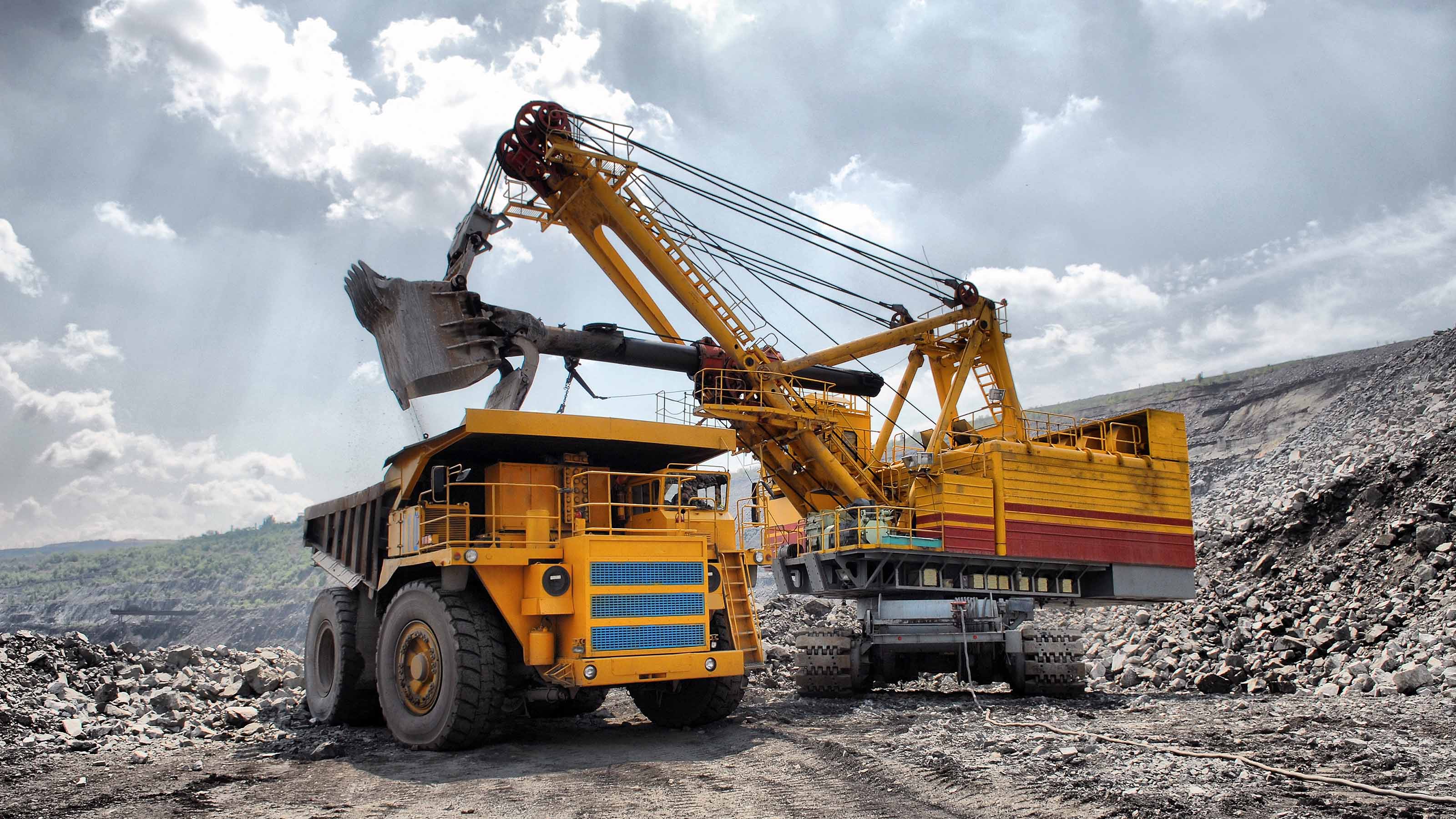
Cleveland-Cliffs
- Market value: $12.0 billion
- Dividend yield: N/A
Without steel, you have no industrial economy. It's really that simple.
And that brings us to Cleveland-Cliffs (CLF, $23.94). Headquartered in its namesake – Cleveland, Ohio – Cleveland-Cliffs was traditionally an iron ore mining company. It was the largest and oldest independent American iron ore miner, with a history dating back to 1847. But after a series of acquisitions, Cleveland-Cliffs is now also the largest flat-rolled steel producer in North America.
The company is now fully vertically integrated, handling the process from the mine to the steel mill. While this might not completely insulate the company from the post-COVID supply chain issues plaguing much of the global economy, it certainly helps.
It also helps that Cleveland-Cliffs has made real strides in environmentalism, at least for a heavy industrial producer. The company has pledged to be the leader in "sustainable" steel making and mining, and it has a goal of reducing carbon emissions by 25% by 2030.
Cleveland-Cliffs' shares have been on fire since March of last year, rising by more than a factor of five. Regardless, B. Riley analysts (Buy) still call CLF "one of the most compelling stocks within our coverage." That's in part because it's so dirt-cheap – at a forward price-to-earnings ratio of just 4.8, CLF is among the cheapest commodity stocks you can find.
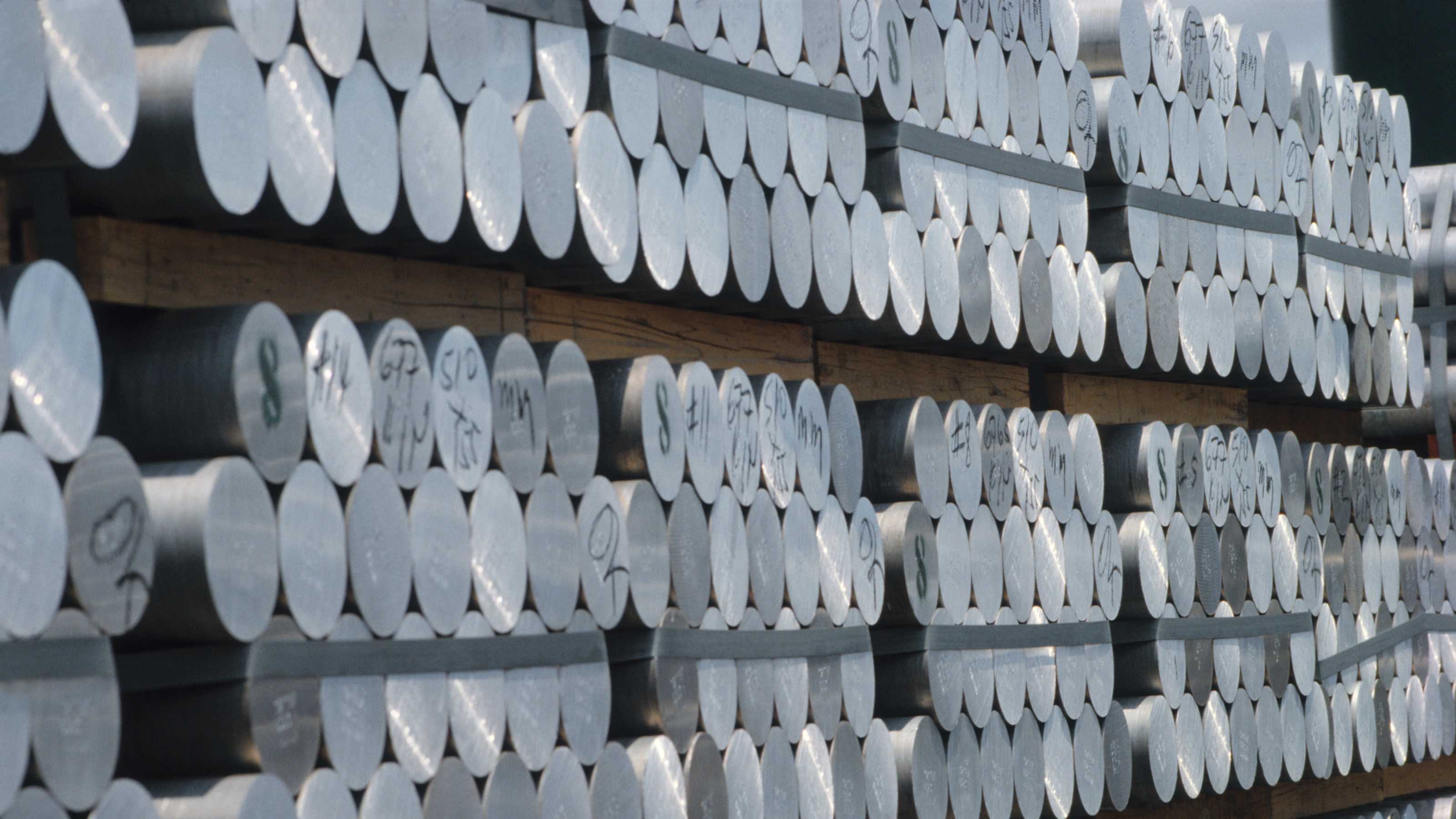
Alcoa
- Market value: $8.7 billion
- Dividend yield: N/A
Although it isn't as prominent as steel, aluminum is a crucial industrial metal. It's lightweight, making it the metal of choice for aviation. Automakers are also experimenting with aluminum bodies to decrease vehicle weight and improve gas mileage. Ford (F) made a splash several years ago by introducing an aluminum-bodied F-150 that persists to this day.
Unlike iron or steel, aluminum also won't rust over time, has insulating properties that can lower heating and cooling bills, and is virtually impervious to temperature changes, making it ideal for many construction projects. These same properties make it a "greener" metal in an era in which climate consciousness is front and center.
If you want exposure to aluminum, it's difficult to avoid Alcoa (AA, $46.77), the largest American aluminum company. Alcoa mines bauxite ore and processes it into aluminum and aluminum products – and returning to the green theme, Alcoa also owns hydroelectric power plants.
Like many of the commodity stocks covered here, Alcoa is subject to booms and busts. AA plunged by about 90% between the end of 2017 and March 2020. But since then, shares have rallied by more than 700% and have shown no sign of slowing down.
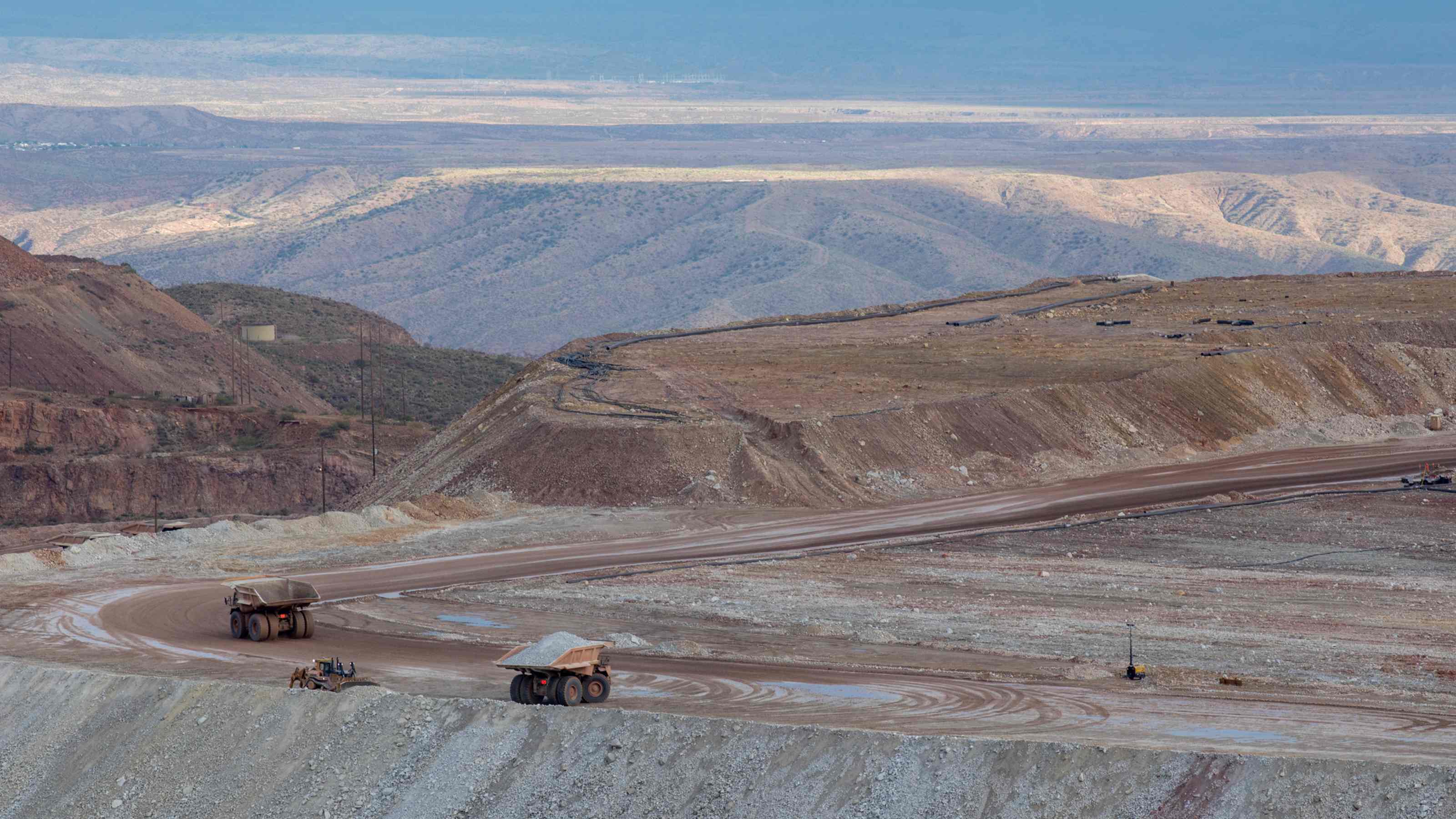
Freeport-McMoRan
- Market value: $53.4 billion
- Dividend yield: 0.8%
Copper is an essential commodity in building and construction. As the safest and most widely used metal in electrical wiring, as well as an important component of plumbing, it's just about impossible to build anything today without copper.
Copper is also well known as an economic bellwether. The price of "Dr. Copper" will tell you a lot about the health of the economy. It tends to do well when the economy is booming, and a drop in the price of copper often portends a slowdown.
If you want exposure to copper, then it only makes sense to own Freeport-McMoRan (FCX, $36.36), one of the world's largest and highest profile copper miners.
But there's more to this story.
While commodity stocks are often associated with the "dirty" side of the real economy, copper is a critical component in the making of green energy. Electric vehicles, such as those made by Tesla (TSLA) and others, use about four times as much copper as gasoline-powered vehicles. So, the greener the economy gets, the more demand we'll see for copper.
"Copper should benefit from cyclical demand growth, longer-term secular demand growth in electric vehicles, renewable energy and the decarbonization agenda in general and significant supply constraints," say Jefferies analysts (Buy).

Newmont
- Market value: $46.1 billion
- Dividend yield: 3.8%
Industrial metals underpin the real economy, of course. But precious metals have historically been used as inflation and currency hedges, and gold miners are a way to get indirect exposure to precious metals.
Newmont (NEM, $57.73) is one of the world's largest miners with proven gold reserves of 94.2 million ounces as of the end of 2020. It runs a truly global operation with mines in the United States, Canada, Mexico, Dominican Republic, Peru, Suriname, Argentina, Chile, Australia and Ghana.
In addition to gold, the company also produces significant amounts of copper, silver, zinc and lead.
As was the case with the industrial miners, Newmont's share price can be subject to wild swings. The prices of the metals it mines are volatile, and the miner itself can be thought of as a leveraged play of the metals. So, when the share price moves, it can really move.
That's OK. This creates ample trading opportunities. Between its 1984 lows and 1987 high, the shares rose by more than a factor of five. Between 2000 and 2012, the shares rose by a similar amount. And more recently, the shares rose by more than a factor of three between 2015 and early 2021. Being on the right side of a move in miners can be one of the best trades you ever make.
As an added benefit, the stock is also a solid dividend payer. Newmont yields 3.8% at current prices, which is wildly competitive in a world in which the 10-year Treasury yields just 1.3%.

Invesco Optimum Yield Diversified Commodity Strategy No K-1 ETF
- Assets under management: $6.0 billion
- Dividend yield: 0.0%
- Expenses: 0.59%, or $59 annually for every $10,000 invested
And finally, if you want to bypass commodity stocks altogether and go straight to the commodities themselves, consider the shares of the Invesco Optimum Yield Diversified Commodity Strategy No K-1 ETF (PDBC, $19.97).
PDBC is a commodities ETF that tracks the performance of the DBIQ Optimum Yield Diversified Commodity Excess Return Index, which is made up of 14 liquid commodities futures contracts spread across energy, industrial metals, precious metals and agricultural commodities.
West Texas Intermediate crude is the largest single position, but the fund has sizable positions in copper, aluminum, sugar and a host of others.
It's generally not practical for a commodities ETF to own commodities outright. There are storage and transportation costs to consider, and there is no real reason to own a silo full of wheat when liquid futures contracts exist. PDBC gets the exposure it needs by taking long positions in commodities futures and investing its collateral in U.S. Treasury bills. Those bills aren't adding much to returns at current yields, but if the Fed follows through with raising interest rates, PDBC will stand to benefit as it will earn that higher yield on the collateral it has in T-bills.
Commodity ETFs can be a bit of a minefield. Many have complex tax accounting and send a Schedule K-1 come tax season rather than the standard 1099. Well, PDBC keeps it simple. If you buy it or trade it, any gains or losses will show up on the standard 1099 you get from your broker.
Get Kiplinger Today newsletter — free
Profit and prosper with the best of Kiplinger's advice on investing, taxes, retirement, personal finance and much more. Delivered daily. Enter your email in the box and click Sign Me Up.

Charles Lewis Sizemore, CFA is the Chief Investment Officer of Sizemore Capital Management LLC, a registered investment advisor based in Dallas, Texas, where he specializes in dividend-focused portfolios and in building alternative allocations with minimal correlation to the stock market.
-
 When Should You Hand Over the Keys — to Your Investments?
When Should You Hand Over the Keys — to Your Investments?The secret to retirement planning? "The best time to hand over the keys is before you’ve realized you need to hand over the keys."
By Maurie Backman
-
 A checklist for high-net-worth individuals looking to maintain and grow their wealth.
A checklist for high-net-worth individuals looking to maintain and grow their wealth.A strategic guide to managing, preserving, and expanding your wealth for long-term financial security.
By Dori Zinn
-
 The Cheapest Places To Retire in the US
The Cheapest Places To Retire in the USWhen you're trying to balance a fixed income with an enjoyable retirement, cost of living is a crucial factor to consider.
By Stacy Rapacon
-
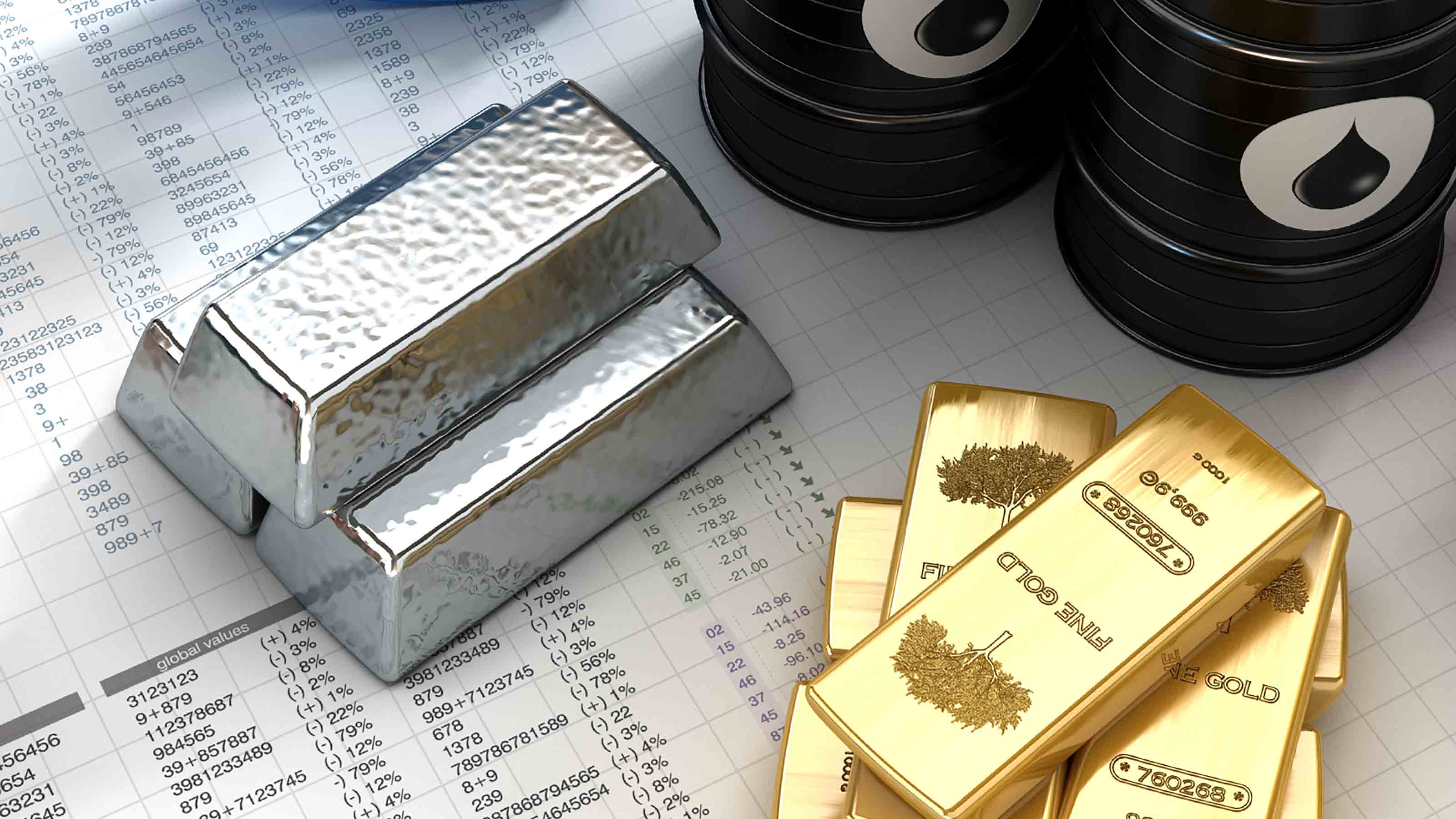 Why You Should Invest in Commodities
Why You Should Invest in CommoditiesThese portfolio diversifiers are in a long-term uptrend and show why you should invest in commodities
By Anne Kates Smith
-
 Why I Still Won't Buy Gold: Glassman
Why I Still Won't Buy Gold: GlassmanOne reason I won't buy gold is because while stocks rise briskly over time – not every month or year, but certainly every decade – gold does not.
By James K. Glassman
-
 Can Stocks Picked by Artificial Intelligence Beat the Market? 3 Stocks to Watch
Can Stocks Picked by Artificial Intelligence Beat the Market? 3 Stocks to Watchstocks An artificial intelligence stock-picking platform identifying high-potential equities has been sharp in the past. Here are three of its top stocks to watch over the next few months.
By Dan Burrows
-
 5 Stocks to Sell or Avoid Now
5 Stocks to Sell or Avoid Nowstocks to sell In a difficult market like this, weak positions can get even weaker. Wall Street analysts believe these five stocks should be near the front of your sell list.
By Dan Burrows
-
 Best Stocks for Rising Interest Rates
Best Stocks for Rising Interest Ratesstocks The Federal Reserve has been aggressive in its rate hiking, and there's a chance it's not done yet. Here are eight of the best stocks for rising interest rates.
By Jeff Reeves
-
 The 5 Safest Vanguard Funds to Own in a Volatile Market
The 5 Safest Vanguard Funds to Own in a Volatile Marketrecession The safest Vanguard funds can help prepare investors for continued market tumult, but without high fees.
By Kyle Woodley
-
 The 5 Best Inflation-Proof Stocks
The 5 Best Inflation-Proof Stocksstocks Higher prices have been a major headache for investors, but these best inflation-proof stocks could help ease the impact.
By Louis Navellier
